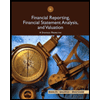
Concept Introduction:
The intercompany transactions occur when the unit of legal entity is having transactions with another unit of the similar entity. This transaction can be divided into two categories such as direct and indirect intercompany transfer. The direct transfer occurs when there is transfer between the different units of the same entity and indirect transfer occurs when the unit of entity acquires debt or assets issued to unrelated entity through another unit of the same entity. This type of transfer will help the entity in improving the flow of finance and asset in efficient manner.
Requirement 1
The consolidated entry to remove the effect of the intercompany sale as of December 31 20X3.
Concept Introduction:
The intercompany transactions occur when the unit of legal entity is having transactions with another unit of the similar entity. This transaction can be divided into two categories such as direct and indirect intercompany transfer. The direct transfer occurs when there is transfer between the different units of the same entity and indirect transfer occurs when the unit of entity acquires debt or assets issued to unrelated entity through another unit of the same entity. This type of transfer will help the entity in improving the flow of finance and asset in efficient manner.
Requirement 2
The consolidated entry to remove the effect of the intercompany sale as of December 31 20X4.
Want to see the full answer?
Check out a sample textbook solution
Chapter 7 Solutions
ADV.FIN.ACCT. CONNECT+PROCTORIO PLUS
- What is the amount of the ending merchandise inventory?arrow_forwardThe average total asset amount is?arrow_forwardXYZ Corporation started the year with $4,500,000 of net fixed assets and ended the year with $4,200,000 of net fixed assets. Depreciation expenses during the year were $350,000. How much gross fixed assets did XYZ buy or sell during the year?arrow_forward
- I need help with this solution and general accounting questionarrow_forwardJefferson Corp. recently reported a net income of $7,840 and depreciation of $1,230. How much was its net cash flow, assuming it had no amortization expense and sold none of its fixed assets?arrow_forwardCan you solve this financial accounting problem with appropriate steps and explanations?arrow_forward
 Cornerstones of Financial AccountingAccountingISBN:9781337690881Author:Jay Rich, Jeff JonesPublisher:Cengage Learning
Cornerstones of Financial AccountingAccountingISBN:9781337690881Author:Jay Rich, Jeff JonesPublisher:Cengage Learning Financial Reporting, Financial Statement Analysis...FinanceISBN:9781285190907Author:James M. Wahlen, Stephen P. Baginski, Mark BradshawPublisher:Cengage Learning
Financial Reporting, Financial Statement Analysis...FinanceISBN:9781285190907Author:James M. Wahlen, Stephen P. Baginski, Mark BradshawPublisher:Cengage Learning Financial Accounting: The Impact on Decision Make...AccountingISBN:9781305654174Author:Gary A. Porter, Curtis L. NortonPublisher:Cengage Learning
Financial Accounting: The Impact on Decision Make...AccountingISBN:9781305654174Author:Gary A. Porter, Curtis L. NortonPublisher:Cengage Learning





